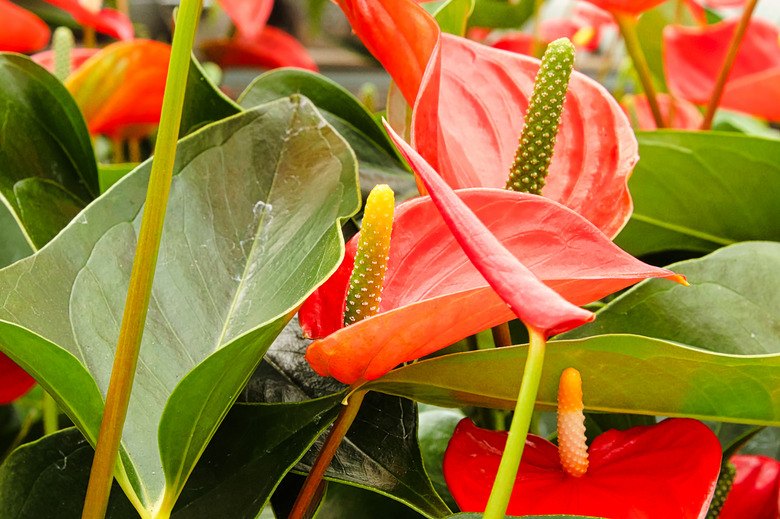How To Prune Anthurium
We may receive a commission on purchases made from links.
The leaves of your anthurium (Anthurium spp.) are starting to grow in a helter-skelter pattern, and its flowers have lost their brilliance. Prune anthurium to keep your plant in an organized and healthy shape. There are few maintenance tasks when caring for anthuriums. Water, proper light and an occasional gentle snip are all you need to keep this evergreen houseplant flourishing and producing waxy green leaves and heart-shaped flowers.
The Well-Traveled Anthurium
The Well-Traveled Anthurium
The tropical rain forests of Colombia, Guatemala and Brazil's Amazon region are the native ranges of the anthurium, where they attach themselves to trees. In their native habitat, these plants can grow in the ground or as epiphytes, or air plants, which produce few roots and do not draw nutrients from the trees but from air, water and bird droppings. Replicating a tropical environment inside your home (without the bird droppings) keeps the plant growing and producing flowers until it reaches over 20 inches in height.
Selecting Your Anthurium
Selecting Your Anthurium
Choose carefully when selecting which anthurium to bring into your home. A garden center's display can be hypnotizing with all the green leaves surrounding brilliantly red flowers, but further investigation is necessary before going to the cash register. The leaves should be waxy, shiny and completely green. Discolored leaves indicate too little or too much water.
The red-hued flowers, known as spathes, and the creamy yellow stalk protruding from the center of the spathe, known as a spadix, will not be discolored if the plant is healthy. The foliage should not be damaged. The plant should look free of pests, and the leaves should have no spots. An overabundance of leaves may indicate that the garden center hasn't pruned or maintained the anthurium to its potential.
Anthurium’s Perfect Environment
Anthurium's Perfect Environment
Keeping the indoor temperature higher than 60 degrees Fahrenheit and providing ample sun and warmth year-round promote anthurium growth and health. Keep the soil moist but not wet and cover the surface soil with moss to keep in moisture. Humidity is the lifeblood of anthurium, as this tropical plant prospers in moist air. Mist the plant frequently. Consider repotting every two years in early spring to midsummer to rid the soil of minerals that were deposited by fertilizer and to revitalize the plant.
How to Prune Anthurium
How to Prune Anthurium
Discolored leaves and/or flowers must be pruned away from your plant. An overabundance of leaves chokes the plant. Use your hands, sterilized secateurs or gardening shears to trim away the nearly dead leaves, keeping in mind the shape of your plant. Cut off faded flowers all the way down to the base, as new flowers do not grow from the original stem. When trimming the leaves of an anthurium, don't be too aggressive. Leave at least four leaves on the plant.
If the plant is getting leggy, consider repotting it. Water before repotting to hydrate the roots and avoid transplant shock. Cover the bald main stem with soil to encourage new root growth and give vitality to the plant. Remove the stipules, which are those dry, brown, barklike growths that protected the leaves when they were new and no longer serve a purpose.
